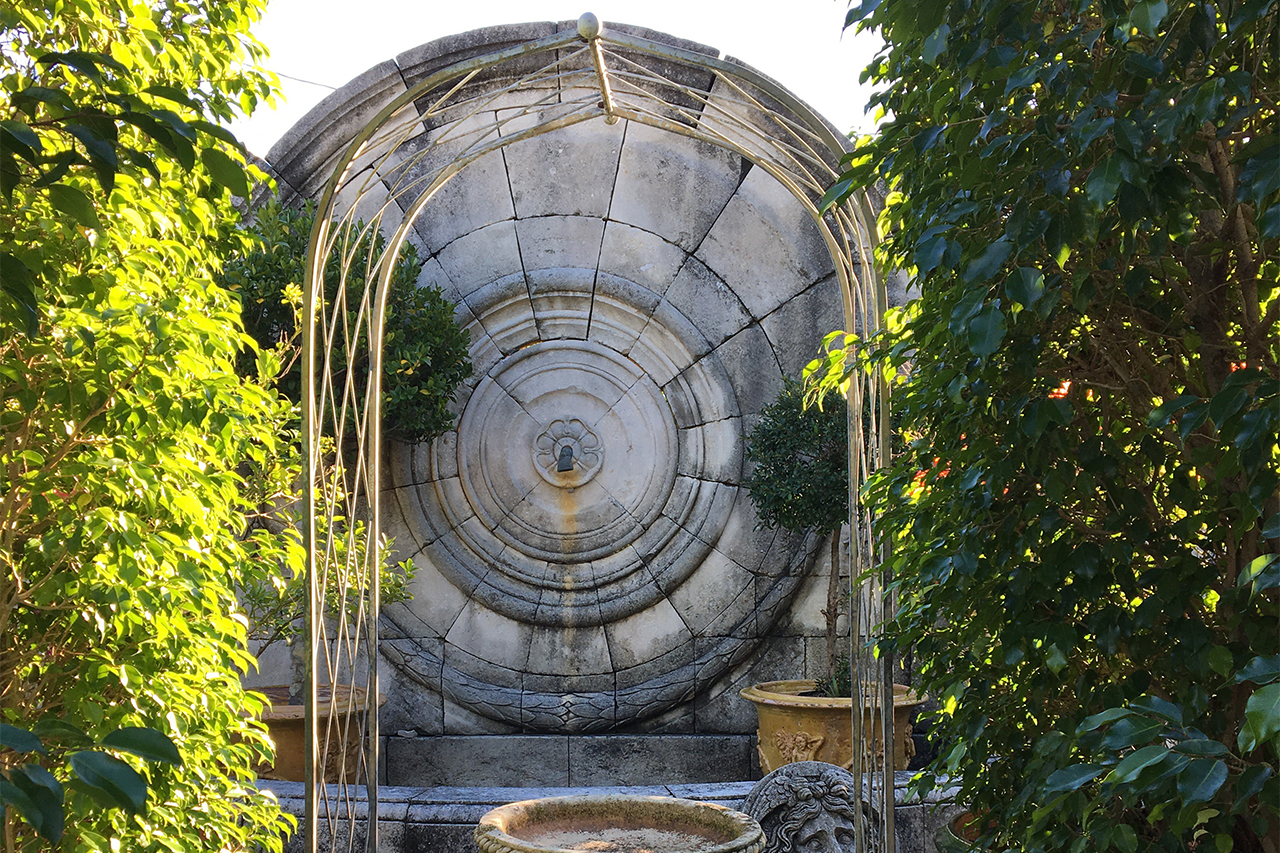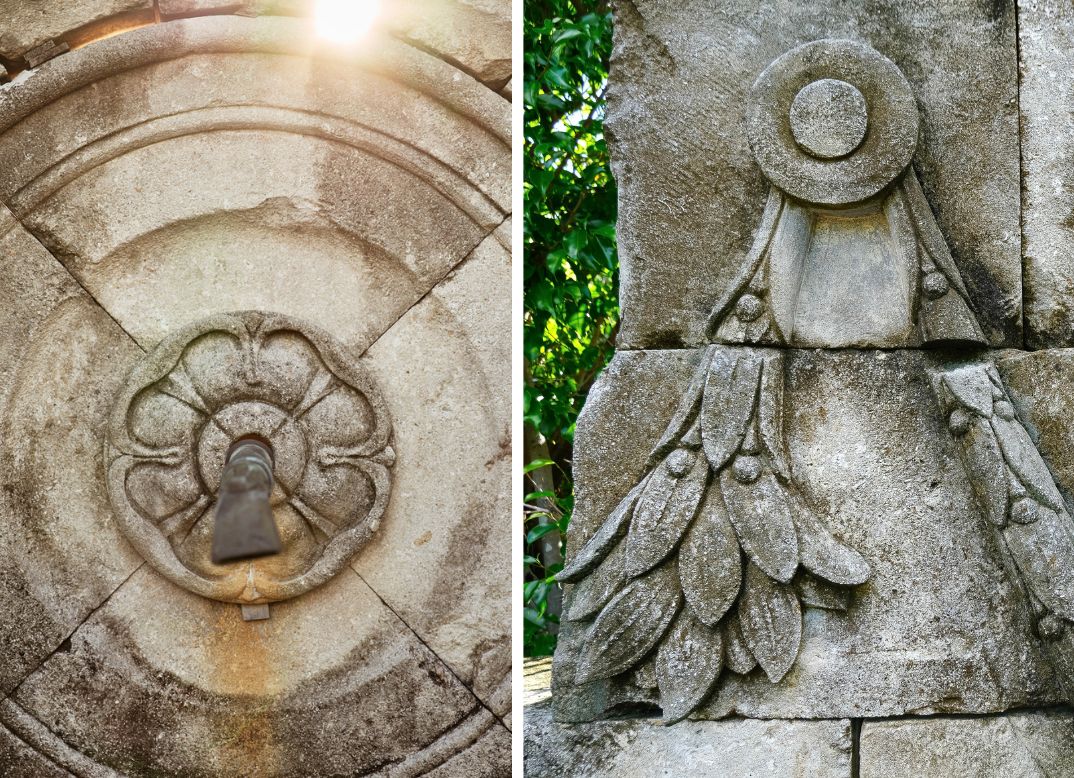
A French Monumental Fountain
September 22, 2023
In the medieval age, antique limestone fountains primarily served a practical purpose, providing a vital source of water resources to towns and cities. The Arras Fountain stands as an exemplary representation of this transformation. A prime example of a monumental fountain. At an imposing height of almost thirteen feet, the limestone fountain showcases the mastery of hand-carving techniques. The artisan’s dedication to adorn their beloved homeland with the beauty of art and craftsmanship. However, 18th-century France ushered in the era of opulence and the luxurious Louis XVI style. These garden fountains became immersive and impressive and took on a new role as extravagant displays of wealth and power.

The Fontaine Arras features intricate details that exemplify the Louis XVI style. The central feature of the limestone fountain is a large centered swag, which cascades gracefully down its antique backsplash. The exquisite carving and elegant drapery of the garland epitomizes the era’s sense of grandeur and sophistication. A visual representation of the luxury and lavishness that characterized the monarchy. The delicate craftsmanship of the central rosette and spout serves as the focal point of the fountain and creates a gentle water flow. The large and wide water basin is adorned with four leaves or quatre feuilles. It exhibits intricate edge detailing that adds to its overall elegance.
Realizing how they were carved without modern technologies is even more astonishing, adding to our understanding of their value.
Today, the Fontaine Arras remains not only a symbol of historical opulence and the might of the monarchy but also a testament to the evolving narrative of France and its people. It serves as a visual and auditory reminder of a bygone era when fountains were more than just sources of water—they were expressions of power, luxury, and the enduring legacy of an extraordinary time in history.